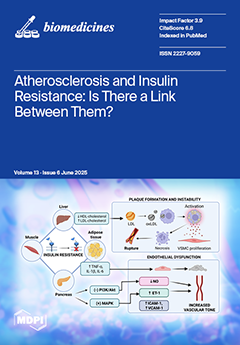Background and Objectives: Methotrexate (MTX) is a widely utilised pharmaceutical agent in the treatment of various malignancies and inflammatory diseases. However, its clinical utility is often constrained by its potential for hepatotoxicity. Although pyridostigmine is a well-established reversible acetylcholinesterase inhibitor, its potential therapeutic role in preventing hepatic injury remains incompletely defined. The present study aimed to investigate whether pyridostigmine provides protective effects against MTX-triggered liver damage in a rat model.
Methods: Thirty-six female Wistar albino rats randomly assigned to three groups: control (
n = 12), MTX + saline (
n = 12), and MTX + pyridostigmine (
n = 12). Hepatotoxicity was induced by a single-dose MTX injection (20 mg/kg), followed by daily oral administration of either pyridostigmine (5 mg/kg) or saline for ten consecutive days. Hepatic function markers, oxidative stress parameters, fibrosis-associated mediators, and histopathological changes were assessed.
Results: Pyridostigmine significantly attenuated MTX-induced elevations in plasma alanine aminotransferase (
p < 0.05) and cytokeratin-18 levels (
p < 0.001), and reduced liver and plasma malondialdehyde (MDA) levels (
p < 0.05). Additionally, pyridostigmine treatment resulted in reduced levels of transforming growth factor-beta (
p < 0.05), bone morphogenetic protein-9 (
p < 0.001), and endoglin levels (
p < 0.05), as well as increased sirtuin 1 level (
p < 0.05). Histopathological examination revealed that pyridostigmine treatment significantly reduced MTX-induced hepatocyte necrosis, fibrosis, and cellular infiltration.
Conclusions: Pyridostigmine exerted hepatoprotective effects against MTX-induced liver injury by attenuating oxidative stress, restoring SIRT1 expression, and suppressing pro-fibrotic signaling. These findings indicate that pyridostigmine may hold therapeutic potential for the prevention of MTX-associated hepatotoxicity.
Full article






